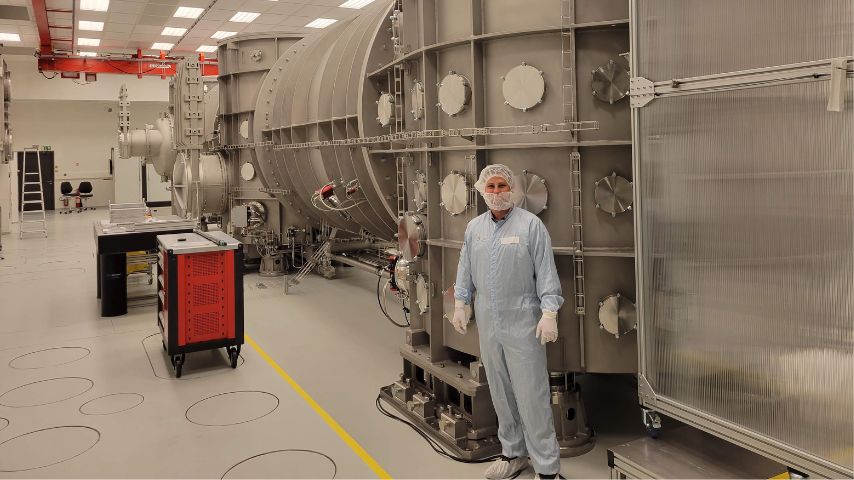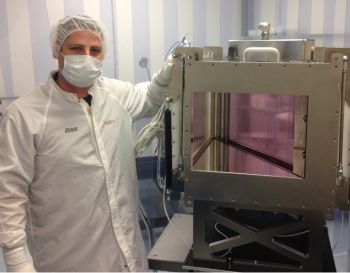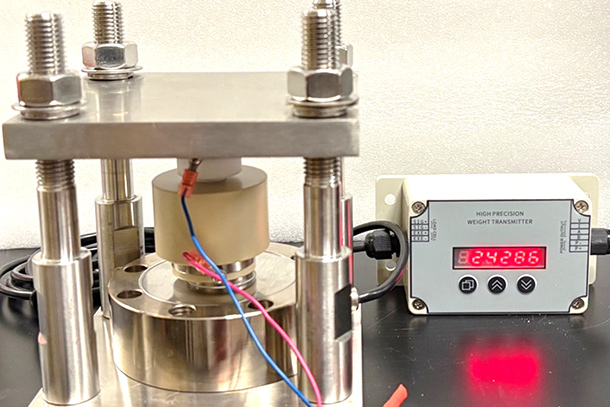Using Lasers to Create the Power of the Stars on Earth
Using Lasers to Create the Power of the Stars on Earth


Doug Hammond and Focused Energy look to meet the challenges of developing laser-driven inertial confinement fusion energy for commercial electricity production.
Armed with “high-energy lasers,” researchers across the globe are on a quest to fuse isotopes of the most abundant element in the universe—hydrogen. Their goal is to generate clean and plentiful energy to fill the growing baseload power gap that renewables like solar and wind just can’t fill.
Doug Hammond, vice president of laser engineering, is part of an ambitious, global team at Focused Energy based in Austin, Texas, and Darmstadt, Germany. Last year, the startup was one of eight companies selected by the U.S. Department of Energy (DOE) to participate in the Milestone-Based Fusion Development Program, initially funded with $46 million for the first 18-month phase. His company seeks to further the successes of the Lawrence Livermore National Laboratory (LLNL) with its direct-drive, proton fast ignition approach to reach the robust and high-gain ignition needed for viable commercial energy production.
In 2022, the LLNL’s National Ignition Facility (NIF) in California reported a first in history—a fusion reaction produced more energy than it took to start the process. The New York Times reported the details of “ignition,” describing how 192 lasers blasted and compressed a diamond-encased “BB-size fuel pellet of deuterium and tritium.” In 100 trillionths of a second, 2.05 megajoules of energy hit the hydrogen isotopes and “out flowed a flood of neutron particles—the product of fusion—which carried about 3 megajoules of energy, a factor of 1.5 in energy gain.”
Become a member: How to Join ASME
The reason it took so long for NIF to reach ignition (construction of the laboratory began in 1997) is that “fusion is extremely difficult,” Hammond explained. “Making D-T nuclei fuse requires temperatures and pressures that far exceed those found in the center of the sun.”
The NIF results have been described as a “Kitty Hawk” moment for the burgeoning fusion industry. “The physics of laser-driven D-T fusion has now been demonstrated,” said Hammond. However, there are a number of major engineering challenges that need to be overcome to make laser fusion commercially viable, from developing high-efficiency and high-energy laser systems to target injection and tracking technologies to reactor materials and tritium breeding technologies. Yet he sees all of these challenges as significant but solvable engineering problems. “It is just a matter of applying the right amount of resources to solving the problems,” Hammond said.
The biggest challenge that is slowing progress on solving these problems is the relatively low level of public and private funding in comparison to the potential impacts that technological advancements could have. As the key physics has now been demonstrated, the U.S. government is heavily relying on the private sector to fund the remaining developments needed for commercialization. However, the high capital needs, the high risks associated with any one approach, and the relatively long timeframe for a return on investment make the pool of potential private investors very small. It’s “not an ideal combination,” Hammond admitted.
Focused Energy’s approach relies on direct-drive proton fast ignition. “Nanosecond lasers are used to spherically compress the fuel pellet, and then picosecond lasers are focused onto a foil to generate a proton beam that superheats a small area and ignites the fuel,” Hammond explained. “This lower compression approach reduces the total amount of laser energy required, reduces the impacts of laser-plasma instabilities, and reduces the requirements on target quality and laser irradiation uniformity. All these things are necessary in order to reach the robust and high-gain ignition needed for commercial energy production.”
More for You: Small Reactor with Big Potential
Hammond loves working on unique and high-impact engineering challenges. He has spent most of his career working on high-energy lasers, some of which can be as large as the length of a football field. “I see fusion as a major challenge for humanity that must be solved. It is not a question of if it will be solved. It is a question of when. I can’t think of a more impactful technology than fusion energy, so there is nothing I would rather be working on,” he explained.
He also sees the selection by DOE as a major milestone for Focused Energy. “To go through that process and get selected is validating,” Hammond said. He talked about the rigorous peer-review process the DOE uses and their selections being based on the scientific and technical merits of the company’s approach and plans. “So, it's very validating to have the DOE review the approach and have confidence that it could work,” he said.
Cathy Cecere is membership content program manager.
Doug Hammond, vice president of laser engineering, is part of an ambitious, global team at Focused Energy based in Austin, Texas, and Darmstadt, Germany. Last year, the startup was one of eight companies selected by the U.S. Department of Energy (DOE) to participate in the Milestone-Based Fusion Development Program, initially funded with $46 million for the first 18-month phase. His company seeks to further the successes of the Lawrence Livermore National Laboratory (LLNL) with its direct-drive, proton fast ignition approach to reach the robust and high-gain ignition needed for viable commercial energy production.
Ignition
In 2022, the LLNL’s National Ignition Facility (NIF) in California reported a first in history—a fusion reaction produced more energy than it took to start the process. The New York Times reported the details of “ignition,” describing how 192 lasers blasted and compressed a diamond-encased “BB-size fuel pellet of deuterium and tritium.” In 100 trillionths of a second, 2.05 megajoules of energy hit the hydrogen isotopes and “out flowed a flood of neutron particles—the product of fusion—which carried about 3 megajoules of energy, a factor of 1.5 in energy gain.”
Become a member: How to Join ASME
The reason it took so long for NIF to reach ignition (construction of the laboratory began in 1997) is that “fusion is extremely difficult,” Hammond explained. “Making D-T nuclei fuse requires temperatures and pressures that far exceed those found in the center of the sun.”
The NIF results have been described as a “Kitty Hawk” moment for the burgeoning fusion industry. “The physics of laser-driven D-T fusion has now been demonstrated,” said Hammond. However, there are a number of major engineering challenges that need to be overcome to make laser fusion commercially viable, from developing high-efficiency and high-energy laser systems to target injection and tracking technologies to reactor materials and tritium breeding technologies. Yet he sees all of these challenges as significant but solvable engineering problems. “It is just a matter of applying the right amount of resources to solving the problems,” Hammond said.
The biggest challenge that is slowing progress on solving these problems is the relatively low level of public and private funding in comparison to the potential impacts that technological advancements could have. As the key physics has now been demonstrated, the U.S. government is heavily relying on the private sector to fund the remaining developments needed for commercialization. However, the high capital needs, the high risks associated with any one approach, and the relatively long timeframe for a return on investment make the pool of potential private investors very small. It’s “not an ideal combination,” Hammond admitted.
Focused Energy
Focused Energy’s approach relies on direct-drive proton fast ignition. “Nanosecond lasers are used to spherically compress the fuel pellet, and then picosecond lasers are focused onto a foil to generate a proton beam that superheats a small area and ignites the fuel,” Hammond explained. “This lower compression approach reduces the total amount of laser energy required, reduces the impacts of laser-plasma instabilities, and reduces the requirements on target quality and laser irradiation uniformity. All these things are necessary in order to reach the robust and high-gain ignition needed for commercial energy production.”
More for You: Small Reactor with Big Potential
Hammond loves working on unique and high-impact engineering challenges. He has spent most of his career working on high-energy lasers, some of which can be as large as the length of a football field. “I see fusion as a major challenge for humanity that must be solved. It is not a question of if it will be solved. It is a question of when. I can’t think of a more impactful technology than fusion energy, so there is nothing I would rather be working on,” he explained.
He also sees the selection by DOE as a major milestone for Focused Energy. “To go through that process and get selected is validating,” Hammond said. He talked about the rigorous peer-review process the DOE uses and their selections being based on the scientific and technical merits of the company’s approach and plans. “So, it's very validating to have the DOE review the approach and have confidence that it could work,” he said.
Cathy Cecere is membership content program manager.






